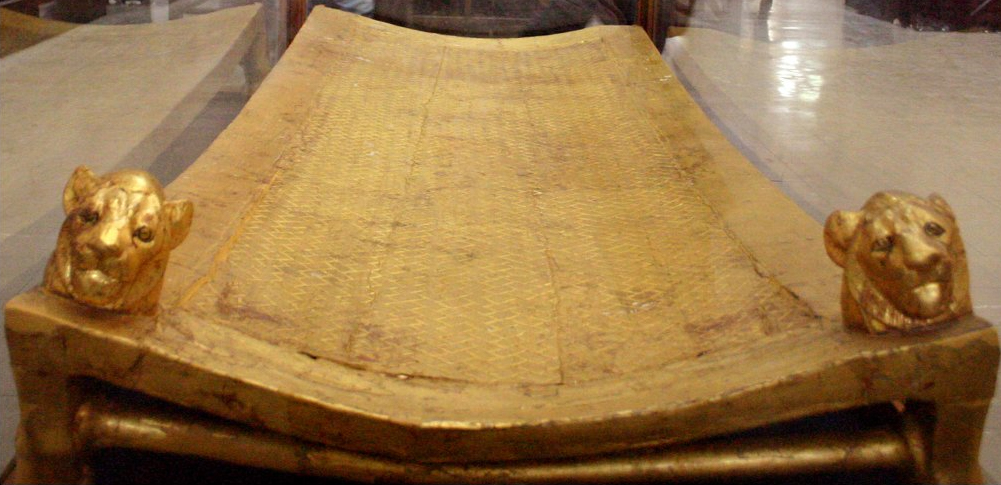
Women Crush Wednesday: Goddess Nut
This week let’s talk about my favorite goddess Nut! She was the goddess of the sky, stars, cosmos, and the universe.
Names and Epithets
Nut’s name means “Sky” in ancient Egyptian and uses the hieroglyph determinative for the sky. It can also be transcribed as Nunut, Nent, or Nuit. With any ancient Egyptian word, the pronunciation of her name is uncertain because vowels were omitted from its writing.

Like many gods, Nut had several epithets. She was the Coverer of the Sky, She who Protects, She who Bore the Gods, and She who Holds a Thousand Stars.
Description

Nut is depicted in several ways, but the most common is as a dark blue nude woman covered with white or yellow stars. Often she depicted arching over the Earth with only her fingers and toes touching land. When she was depicted as a woman, she has a water-pot hieroglyph (which is pronounced nw or nu) over her head.
She could also be depicted as a cow, sycamore tree, or as a giant sow, suckling piglets who represent the stars.
Origin Story
Nut’s birth is dictated in the Heliopolitan creation story. Tefnut is a personification of moisture, mated with Shu, which is a personification of the air. They gave birth to Nut and her brother Geb, who is the god of the Earth.
This is unique in that most ancient civilizations have a Father Sky and a Mother Earth, but in the case of Ancient Egyptian mythology, Nut is the Sky Mother and Geb is the Earth Father.
Myths
Nut is absolutely vital in Egyptian mythology because she birthed the gods that we know and love.
According to the myth, Ra was the second god to rule the world and he decreed that Nut shall not give birth any day of the year. At the time, the year was only made up of 360 days. Nut obviously didn’t like this because it meant that she wouldn’t be able to be with her husband Geb. So she came up with a plan with Thoth, the god of wisdom.
Nut decided to gamble with the Khonsu, god of the Moon. His light rivaled Ra so Nut thought she could use that to advantage. Every time Khonsu lost, he had to give Nut some of his moonlight. Apparently, he was not a very good gambler and lost several times. Eventually, Nut had enough moonlight to make five extra days. Since those days were not technically part of the year, Nut could have all her children.
Nut then gave birth to four children: Osiris, Set, Isis, and Nephthys. In some versions of the myth (typically the ones from Graeco-Roman times) Horus is added to this list of children. Typical Egyptian myths have Horus as the son of Osiris and Isis.
Ra was of course furious about this, so he separated Nut and Geb for eternity. Their father Shu, who again is the personification of the Air, was meant to separate them. Shu is often depicted standing on Geb and holding up Nut.

Role in Egyptian Life
Nut’s chief cult center was located at Heliopolis but the Egyptians also worshiped Nut at Memphis as a healing goddess at a shrine called the House of Nut. She has been associated with the goddess Hathor at Dendera, but she has no known temple built exclusively for her.
“I am Nut, and I have come so that I may enfold and protect you from all things evil.”
In Egyptian life, Nut was the goddess of the sky and a symbol of protecting the dead when they enter the afterlife. During the day, the heavenly bodies such as the Sun and the Moon would make their way across her body. At dusk, they would be swallowed pass through her belly at the night to be reborn at dawn. Her fingers and toes were believed to touch the four cardinal points, north, south, east, and west.

“O my Mother Nut, stretch Yourself over me, that I may be placed among the imperishable stars which are in You, and that I may not die.”
She was a barrier separating the forces of chaos from the ordered cosmos. Because of this, she was often painted on the inside lid of the sarcophagus, protecting the deceased. The ceilings of tombs were also painted dark blue with stars.
“Hail, thou Sycamore Tree of the Goddess Nut! Give me of the water and of the air which is in thee. I embrace that throne which is in Unu, and I keep guard over the Egg of Nekek-ur. It flourisheth, and I flourish; it liveth, and I live; it snuffeth the air, and I snuff the air, I the Osiris Ani, whose word is truth, in peace.”

A sacred symbol of Nut was the ladder used by Osiris to enter her heavenly skies. The ladder was called maqet and a symbol of it was placed in tombs to protect the deceased and invoke the aid of the diety of the dead.
There was also a collection of Egyptian astronomical texts called the Fundamentals of the Course of the Stars or otherwise called the Book of Nut. It talks about various other sky and earth deities.
Sources
https://en.wikipedia.org/wiki/Nut_(goddess)
https://www.ancient-egypt-online.com/nut.html
https://www.gods-and-goddesses.com/egyptian/nut/
https://ancientegyptonline.co.uk/nut/
Image Sources
Nut supported by Geb on the Greenfield Papyrus – Wikimedia Commons (British Museum)
Nut as a cow – Wikimedia Commons (The Gods of the Egyptians by Budge)
Nut on the coffin of Pedusiri at the Milwaukee Art Museum – Wikimedia Commons (Jonathunder)
Nut swallows the Sun in the tomb of Rameses VI – Wikimedia Commons (Hans Bernhard)
Nut – Wikimedia Commons (A. Parrot)
Nut on Pectoral – Flickr (-alice-)
Nut with Geb – https://willendorf.org/category/egyptian-goddess-nut
Nut in the Book of the Dead of Djedkhonsuiesfankh – https://goddess-pages.co.uk/nut-galactic-goddess-ancient-egypt/











